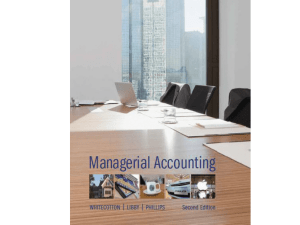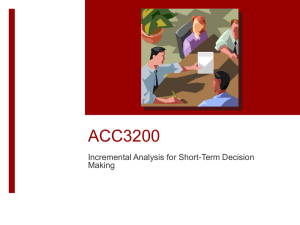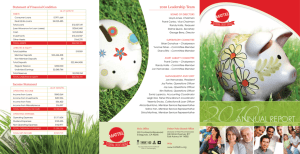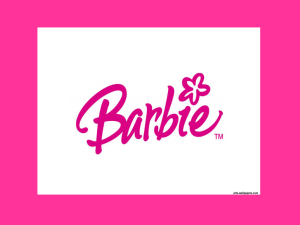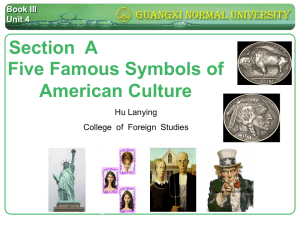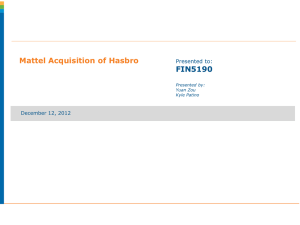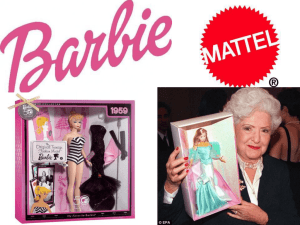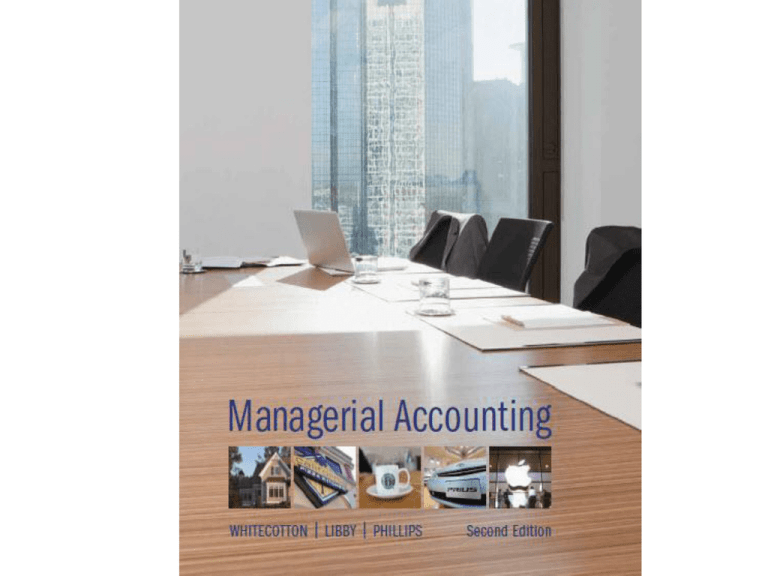
Chapter 7
Incremental Analysis for Short-Term Decision Making
PowerPoint Authors:
Susan Coomer Galbreath, Ph.D., CPA
Charles W. Caldwell, D.B.A., CMA
Jon A. Booker, Ph.D., CPA, CIA
Cynthia J. Rooney, Ph.D., CPA
McGraw-Hill/Irwin
Copyright © 2014 by The McGraw-Hill Companies, Inc. All rights reserved.
Learning Objective 7-1
Describe the five steps in the
decision-making process.
7- 3
Steps in the Decision-Making Process
7- 4
Learning Objective 7-2
Define and identify relevant costs and
benefits.
7- 5
Relevant versus Irrelevant Costs
and Benefits
Relevant Costs have the potential
to influence a decision.
Two Criteria for a Relevant Cost
1. Occurs in the future
2. Differs between decision alternatives
Relevant costs are also called
differential costs, incremental
costs, or avoidable costs.
7- 6
Relevant versus Irrelevant Costs
and Benefits
Irrelevant costs are those that will
not influence a decision.
Costs that have been
incurred in the past.
(sunk costs)
Costs that are the
same regardless of the
alternative chosen.
7- 7
Opportunity Costs and Capacity
Considerations
An opportunity cost is the benefit that is
given up when one alternative is selected
over another.
At full capacity, adding
additional work requires
giving up a portion of
the existing work. The
benefit of the existing
work given up is an
opportunity cost.
With idle capacity,
additional work may be
added without
sacrificing existing work.
There is no opportunity
cost to the additional
work.
7- 8
Learning Objective 7-3
Analyze a special-order decision.
7- 9
Special-Order Decisions
A special order is a one-time
order that is outside the scope
of normal sales.
When analyzing a special
order, only the incremental
costs and benefits are relevant.
7- 10
Special-Order Decisions
A major university has asked Mattel to make a special
University Barbie, dressed in a sporty outfit with the
school’s logo and colors. The university bookstore has
offered to buy 25,000 of these dolls at a price of $7.00
each. Mattel has the capacity to fill the order without
affecting production of other Barbie products, which
are normally sold to toy stores and discount chains for
$9.00 each.
More Information
7- 11
Special-Order Decisions
Mattel estimates that its unit cost to produce the
University Barbie will be:
Should Mattel accept the special order?
7- 12
Incremental Analysis (with Excess
Capacity)
The special order
will result in a
profit of $2.00
per doll and a
total profit of
$50,000. Note
that fixed costs
are excluded
because they are
irrelevant to the
decision.
7- 13
Qualitative Analysis
Two Important Cautions
Mattel should only use this analysis for one-time
or special orders. In the long-term, all costs,
including fixed costs, must be covered. The
managers should also consider the impact that
the special order price might have on customers
who pay through regular channels.
The results of this analysis are valid only if the
company has excess, or idle, capacity.
7- 14
Incremental Analysis (without Excess
Capacity)
Now assume that Mattel is operating at full
production capacity and cannot fill the special
order for 25,000 University Barbie dolls
without giving up production and sale of
Barbie dolls sold through normal channels. The
dolls are normally sold to stores and discount
chains for $9 each. Should Mattel’s managers
accept a special-order price of $7?
7- 15
Incremental Analysis (without Excess
Capacity)
Variable Cost = $5.00
Regular Barbie Sales
Regular sales price
Variable cost
Contribution margin
Per Unit
$ 9.00
5.00
$ 4.00
The opportunity cost
is the contribution
margin lost on
regular sales.
7- 16
Incremental Analysis (without Excess
Capacity)
Without
excess
capacity, the
special order
will result in
a loss when
the
opportunity
cost
of regular
sales is
considered.
7- 17
Learning Objective 7-4
Analyze a make-or-buy decision.
7- 18
Make-or-Buy Decisions
A decision to perform a particular activity or
function in-house or purchase from an outside
supplier has traditionally been called a make-orbuy decision, but could also be called an
insourcing versus outsourcing decision.
Key Questions
1.What costs will change?
2.Are there opportunity costs
associated with either alternative?
3.Are there other qualitative factors to
consider?
7- 19
Make-or-Buy Decisions
Mattel is trying to decide whether to continue packaging the American
Girl doll “in-house” or outsource the packaging process to an external
supplier. Mattel’s packaging costs for the dolls are:
An outside supplier bid $3.00 per doll for the packaging work.
Should Mattel outsource the packaging?
7- 20
Make-or-Buy Decisions
Information Gathered
Manager’s Analysis
• All costs directly related to the packaging
activities, including all direct and indirect
materials, labor, and supervision, could be
avoided.
• Because these costs can be avoided, they
should be considered a relevant cost of
internal packaging.
• Other total fixed manufacturing overhead
costs would remain unchanged.
• Because these costs will be incurred under
either alternative, they are irrelevant and
should be excluded from the analysis.
• The factory space now used for packaging
the American Girl doll collection could be
used to expand production of a popular
product line. The expansion would
generate an additional $150,000 in profit
per year.
• Mattel will receive this benefit by
outsourcing but not if it keeps the
packaging in-house. This amount can be
considered a benefit of outsourcing or an
opportunity cost of insourcing, but not
both.
7- 21
Incremental Analysis
Note that fixed costs are excluded because they are irrelevant
to the decision. Mattel should outsource the packaging.
7- 22
Qualitative Analysis
Other Qualitative Factors
• Will the quality of the packaging be as good, or even better,
than Mattel can provide internally?
• Will the supplier be reliable in delivering the packaging?
• What will happen if demand for the product rises above
200,000 units? Does the supplier have the capacity to meet
the increased demand?
• What will happen in three years? Will the supplier increase
the price significantly?
• What if the expected profit from expanding the other product
line has been substantially over- or underestimated?
• Does outsourcing the packaging create any additional risks?
7- 23
Learning Objective 7-5
Analyze a keep-or-drop decision.
7- 24
Decisions to Keep-or-Drop Segments
Managers must sometimes decide whether to
eliminate a particular division or segment of the
business. These decisions are called keep-or-drop
decisions or continue-or-discontinue decisions.
Key Questions
1.How much will total revenue and total costs
change?
2.Will other segments or product lines be affected?
3.Are there opportunity costs associated with
keeping the segment?
4.Are there other qualitative factors to consider?
7- 25
Decisions to Keep-or-Drop Segments
Should Mattel drop the Barbie Mustang
because of the $20,000 loss last year?
Mattel should consider the segment
margin of $10,000.
7- 26
Decisions to Keep-or-Drop Segments
Impact on Other Segments
• Elimination of the Barbie Mustang will eliminate the revenues,
variable costs, and direct fixed costs for the Barbie Mustang product.
• Elimination of the Barbie Mustang will increase sales of the
Dora the Explorer Jeep by 10%, with no effect on the Jeep 4X4.
• Total variable costs of the Dora the Explorer Jeep will also increase
by 10 % as a result of the increased sales.
• Total common fixed costs will not be affected by the elimination
of the Barbie Mustang. They will be reallocated to the remaining
products based on total sales dollars.
Opportunity Costs
There are no alternative uses for the resources.
7-27
Incremental Analysis
7- 28
Incremental Analysis
Net operating income without the Barbie
Mustang is estimated to be $251,000,
compared to $240,000 with it. The $11,000
difference is the net effect of eliminating the
Barbie Mustang.
7- 29
Qualitative Analysis
Other Factors to Consider:
• What is the impact on customer loyalty and employee moral?
• Will there be any impact on other products and customers?
Regarding substitute goods, customers might choose an
alternate good, for example, purchasing the Dora the Explorer
Jeep if the Barbie Mustang was unavailable.
However, with complementary goods, eliminating one product
could have a negative effect on the related product.
7- 30
Learning Objective 7-6
Analyze a sell-or-process further
decision.
7- 31
Sell-or-Process Further Decisions
Businesses are often faced with the decision
to sell a product “as is” or refine it so that it can be
sold for a higher price.
As a general rule, we process
further only if incremental
revenues exceed incremental
costs.
Costs of manufacturing the
product up to the sell-orprocess decision point are
sunk and therefore irrelevant.
7- 32
Sell-or-Process Further Decisions
Mattel has developed a remote control Hummer toy, spending
a total of $250,000 on R&D. Demand for the new toy is
estimated to be 100,000 units at a price of $15 per unit.
If the company spends an additional $100,000 on R&D to
enhance the toy, it could be sold for $18 per unit. However,
the enhanced toy would have a slightly higher manufacturing
cost.
7- 33
Sell-or-Process Further Decisions
Should Mattel sell the product as it is currently designed,
or spend more money to create an enhanced design?
7- 34
Sell-or-Process Further Decisions
Mattel will make an additional $25,000
in profit by enhancing the product.
7- 35
Summary of Incremental Analysis
Common Rules for Analyzing Relevant Costs and Benefits:
• Relevant costs and benefits occur in the future and differ between
alternatives.
• Variable costs are usually relevant to the decision because they
vary with the number of units produced or sold.
• Fixed costs may not be relevant because they do not change with
the number of units produced or sold. Fixed costs that are directly
related to the decision may be avoidable and thus relevant.
• Opportunity costs are the lost benefit of choosing one alternative
over another. These costs are relevant and occur when capacity is
reached or resources are constrained.
• The quantitative analysis provides a starting point for making
decisions, but must be balanced against qualitative factors such as
quality considerations, customer loyalty, and other factors.
7- 36
Learning Objective 7-7
Prioritize products to maximize
short-term profit with constrained
resources.
7- 37
Prioritizing Products with Constrained
Resources
When a limited resource restricts a company’s ability to
satisfy demand, the company is said to have a constrained
resource that is referred to as a bottleneck.
To maximize profits in the short run, a company with a
bottleneck must prioritize its products or services so as
to maximize contribution margin per unit of the
constrained resource.
The focus is on contribution margin because fixed costs
will not change in the short run, and are not relevant.
7- 38
Prioritizing Products with Constrained
Resources
One of Mattel’s factories produces three types of toy
cars, Match Box, Hot Wheels, and Remote Control with
the following financial and production information.
The company needs 360,000 minutes of machine time to
meet the full demand for all three products, but only has a
total of 330,000 minutes of machine time each month.
Machine time is the bottleneck.
7- 39
Prioritizing Products with Constrained
Resources
Highest unit contribution margin
Highest unit contribution margin
per minute of machine time
7- 40
Prioritizing Products with Constrained
Resources
7- 41
End of Chapter 7
7- 42

